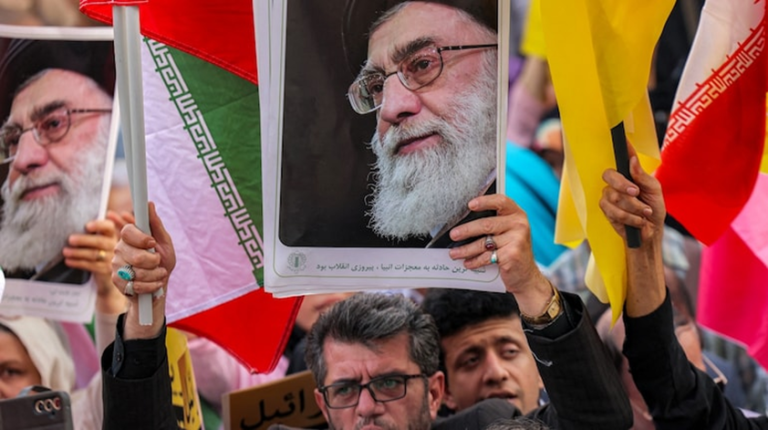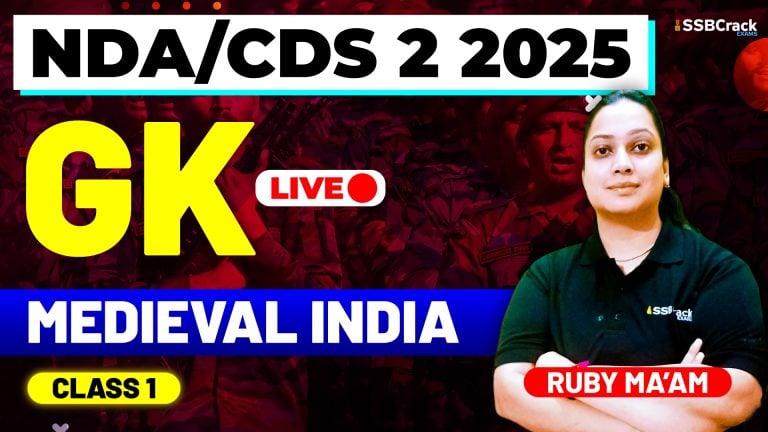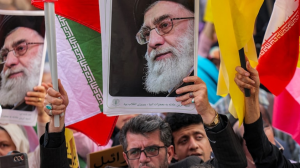ONE – MONTH MARATHON NEWS REPORT (14TH SEPTEMBER 2020 – 12TH OCTOBER 2020)
India’s first Coast Guard Academy to come up at Mangaluru
- India’s first Coast Guard Academy will be established at Mangaluru, Defence Spokesperson (PRO) Bengaluru said on 12 September 2020.
- Around 158 acres Karnataka Industrial Area Development Board (KIADB) land has been taken over for setting up ICG Academy. This is a milestone towards professional maritime training to ICG officers & men & stakeholders.
- Indian Coast Guard operates in complex environment at sea and in the air. It operates various types of ships, craft and aircraft. The operational aspects, maintenance and administrative fronts pose challenges that can only be met with professionally trained manpower. All the manpower of the service; officers and enrolled personnel are professionally trained in their respective domain.
- Indian Coast Guard’s ab-initio, downstream and specialized training is carried out mostly at various Naval training establishments. After completion of the training, the trained manpower assumes their respective roles to undertake the Coast Guard charter of duties.
- Indian Coast Guard personnel were historically trained at the Indian Naval Academy (INA).
DRDO Conducts Successful Flight Test of ABHYAS
- DRDO has conducted a successful flight test of ABHYAS, High-speed Expendable Aerial Target (HEAT) was conducted by Defence Research and Development Organisation (DRDO) from the Interim Test Range, Balasore in Odisha on 22nd September 2020.
- During the trials, two demonstrator vehicles were successfully test flown. The vehicle can be used as a target for the evaluation of various missile systems.
- Abhyas is designed & developed by Aeronautical Development Establishment (ADE), DRDO. The air vehicle is launched using a twin underslung booster. It is powered by a small gas turbine engine and has MEMS based Inertial Navigation System (INS) for navigation along with the Flight Control Computer (FCC) for guidance and control. The vehicle is programmed for fully autonomous flight. The checkout of air vehicle is done using laptop-based Ground Control Station (GCS).
- During the test campaign, the user requirement of 5 km flying altitude, vehicle speed of 0.5 mach, endurance of 30 minutes and 2g turn capability of the test vehicle were successfully achieved.
- Abhyas offers a realistic threat scenario for the practice of weapon systems. Abhyas is designed for autonomous flying with the help of an autopilot, under development at ADE. Abhyas has RCS, Visual and IR augmentation systems required for weapon practice. Abhyas was First successfully flight tested on 13 May 2019.
Passage Exercise (PASSEX) Between Royal Australian Navy and Indian Navy in East Indian Ocean Region
- The Indian Navy (IN) undertook a Passage Exercise (PASSEX) with Royal Australian Navy (RAN) in the East Indian Ocean Region from 23 to 24 September 2020.
- The exercise involved participation of HMAS Hobart from the Australian side and Indian Naval Ships Sahyadri and Karmuk. In addition, an Indian MPA and helicopters from both sides participated in the exercise.
- The exercise, aimed at enhancing interoperability, improving understanding and imbibing best practices from each other, would involve advanced surface and anti-air exercises including weapon firings, seamanship exercises, naval manoeuvres and Cross Deck Flying Operations.
- PASSEXs are regularly conducted by Indian Navy with units of friendly foreign navies, whilst visiting each other’s ports or during a rendezvous at sea. This exercise was conducted in the East Indian Ocean Region and it reflects the growing strength of Indo-Australian bilateral relations as comprehensive strategic partners, particularly in defence cooperation in the maritime domain.
- In the backdrop of the COVID-19 pandemic, the exercise would be conducted strictly as a ‘non-contact activity’ and would not involve any physical contact between the participating personnel of the two navies.
Naval Investiture Ceremony–2020 of Southern Naval Command (SNC)
- Vice Admiral AK Chawla PVSM, AVSM, NM, VSM, ADC, Flag Officer Commanding-in-Chief, Southern Naval Command (SNC), on behalf of the President of India, presented Gallantry and Non-Gallantry Awards, (announced on Republic day 2020) to meritorious naval personnel at the Naval Investiture Ceremony (NIC) conducted at Naval Base, Kochi on 25 Sep 20. In addition, personnel who demonstrated leadership, professional achievements, and distinguished service of a high order, and significantly contributed to service were also felicitated.
- A total of 10 medals which included four Nao Sena Medal (Gallantry), two Nao Sena Medal (Devotion to duty), four Vishisht Seva Medal (long meritorious service) were awarded. On the occasion, the Commander-in-Chief also announced one “Jeevan Raksha Padak” – medal (for acts of courage and self-sacrifice) as well as “Unit Citations” for the year 2020-21 for ashore unit (establishment) (awarded to INS Chilka) and afloat unit (ship) (awarded to INS Sujata) under SNC for delivering exceptional performance over the past one year.
- Speaking on the occasion, Vice Admiral AK Chawla said that the occasion is of special significance, as a formal acknowledgment by the Indian Navy to the conspicuous acts of gallantry and devotion to duty of fellow shipmates. He congratulated all the awardees and highlighted the fact that the men and women of the navy have stood out with their selfless acts at all times just as the Indian Navy has stood for the good in the Indian Ocean region. He gave the example of the recent diving assistance rendered by INS Nireekshak to the govt of Mauritius and said it was along the lines of the Prime Minister’s vision of SAGAR (Security and growth for all in the region).
- The ceremony was witnessed by senior dignitaries of the Indian Navy.NIC is normally conducted centrally for the Indian Navy. However, in view of the prevailing health scenario, it is being conducted locally in each Command for their respective personnel. All social distancing norms and COVID 19 protocol was followed during the ceremonial parade.
JIMEX 20 – Bilateral Maritime Exercise Between Japan and India at North Arabian Sea
- The 4th edition of India – Japan Maritime bilateral exercise JIMEX, which is conducted biennially between the Indian Navy and Japanese Maritime Self-Defense Force (JMSDF) was held in North Arabian Sea from 26 to 28 Sep 2020.
- JIMEX series of exercises commenced in January 2012 with special focus on maritime security cooperation. The last edition of JIMEX was conducted in October 2018 off Visakhapatnam, India.
- Naval cooperation between India and Japan has increased in scope and complexity over the years. Advanced level of operations and exercises during JIMEX-20 are indicative of the continued upswing in Indo-Japanese defence relations and continued efforts by both Governments to work closely for a more secure, open and inclusive global commons, in accordance with international regulations.
- JIMEX 20 showcased high degree of inter-operability and joint operational skills through conduct of a multitude of advanced exercises, across the spectrum of maritime operations. Multi-faceted tactical exercises involving weapon firings, cross deck helicopter operations and complex surface, anti-submarine and air warfare drills consolidated coordination developed by the two navies.
- JIMEX 20 was spread over three days and was conducted in a ‘non-contact at-sea-only format’, in view of COVID-19 restrictions.
- Indigenously built Stealth Destroyer Chennai, Teg Class Stealth Frigate Tarkash and Fleet Tanker Deepak, under the command of Rear Admiral Krishna Swaminathan, Flag Officer Commanding Western Fleet, have represented the Indian Navy.
- The Japanese Maritime Self-Defense Force were represented by JMSDF Ships Kaga, an Izumo Class Helicopter Destroyer and Ikazuchi, a Guided Missile Destroyer, led by Rear Admiral Konno Yasushige, Commander Escort Flotilla – 2 (CCF – 2).
- In addition to ships, P8I Long Range Maritime Patrol Aircraft, integral helicopters, and fighter aircraft have also participated in the exercise.
DEFENCE ACQUISITION PROCEDURE 2020
- A new Defence Acquisition Procedure (DAP) (erstwhile Defence Procurement Procedure or DPP), 2020 was released by the Ministry of Defence (MoD).
- The DAP contains policies and procedures for procurement and acquisition from the capital budget of the MoD in order to modernise the Armed Forces including the Coast Guard.
Background:
- The first Defence Procurement Procedure (DPP) was promulgated in 2002.
- A committee under the chairmanship of Director General (Acquisition) was constituted to review the Defence Procurement Procedure (DPP) 2016.
- DPP 2016 was released replacing the DPP 2013 based on the recommendations of Dhirendra Singh committee. It focussed on indigenously designed, developed and manufactured weapon systems.
- It was facing several issues like lack of transparency (leading to Rafale Scam), inconvenient offset regulations etc.
Objective of DAP 2020: Turning India into a global manufacturing hub. Aligned with the vision of the Government of Atmanirbhar Bharat and empowering Indian domestic industry through Make in India initiative.
- DAP 2020 focuses on simplifying the Defence acquisition procedure and institutionalising monitoring mechanism with concurrent actions using digital technologies & data base for selection of best equipment in a transparent and competitive manner giving adequate opportunities to capable vendors. Make in India initiative of the Government of India focuses on increasing participation of Indian Vendors including MSMEs, and therefore “Make” procedure has been further refined in DAP 2020 to make it more objective and time bound with focus on Indian industry especially MSMEs.
- Cutting down permissible timeframes for various activities and institutionalising robust mechanisms to monitor for probity at various stages of the acquisition process are the attributes of this DAP.
- While the Defence Acquisition involves long gestation periods, whereas the needs of the Armed Forces being non-negotiable, flexibility in the procedure has been provisioned for, to ensure timely availability of important equipment. Thus, the DAP favours swift decision making, provides for suitable timelines and delegates powers to the appropriate authorities to ensure an efficient and effective implementation of the acquisition process, by all stakeholders concerned.
- DAP 2020, a product of extensive analysis, deliberations, interactions and focused formulations, aims to further ‘Self Reliance’ of the country in the defence sector and implement ‘Ease of Doing Business’ with emphasis on Simplification, Delegation, Reduced Timelines and making the process as Industry friendly as possible. Separate chapters have been formulated to incorporate specialised acquisition through the DRDO/OFB/DPSUs, procurements related to Information and Communication Technology Systems, enable Leasing of equipment as also address issues related to Post Contract Management.
Priority of Categorisation:
- Acquisition of defence equipment under this procedure will be based on the above-mentioned categories. The categories, except Make, Leasing, D & D and SPM, have been prioritised based on their relative importance towards indigenisation. However, there is no embargo on a vendor qualifying in a higher category to participate in the lower category in case all requirements of the lower category are met. In decreasing order of priority, the priority of categories will be as follows:
- Buy (Indian – Indigenously Designed Developed and Manufactured) i.e. Buy (Indian-IDDM): This category refers to the acquisition of products from an Indian vendor that have been indigenously designed, developed and manufactured with a minimum of 50% Indigenous Content (IC) on cost basis of the base contract price i.e. total contract price less taxes and duties.
- Buy (Indian): This category refers to the acquisition of products from an Indian vendor which may not have been designed and developed indigenously, having 60% IC on cost basis of the base contract price. Vendors eligible in ‘Buy (Indian-IDDM)’ category will also be permitted to participate in this category with indigenous design and a minimum of 50% IC on cost basis of the base contract price.
- Buy and Make (Indian): This category refers to an initial acquisition of equipment in Fully Formed (FF) state in quantities as considered necessary, from Indian vendor(s) engaged in a tie-up with a foreign Original Equipment Manufacturer (OEM), followed by indigenous production in a phased manner involving Transfer of Technology (ToT) of critical technologies as per specified range, depth and scope from the foreign OEM. Under this category of acquisition, a minimum of 50% IC is required on cost basis of the Make portion of the contract less taxes and duties. Acquisition under this category can also be carried out without any initial procurement of equipment in FF state.
- Buy (Global – Manufacture in India): This category refers to an outright purchase of equipment from foreign vendors, in quantities as considered necessary, followed by indigenous manufacture of the entire/part of the equipment and spares / assemblies / sub-assemblies / Maintenance along with Repair and Overhaul (MRO) facility (only in cases these are part of the main contract) for the equipment, through its subsidiary in India / through a Joint Venture / through an Indian Production Agency (PA) (with ToT of critical technologies as per specified range, depth and scope to the Indian PA), meeting a minimum of 50% IC on cost basis of the Base Contract Price. Indian vendors will be permitted to participate in Buy (Global – Manufacture in India). Acquisition under this category can also be carried out without any initial procurement of equipment in FF state. All payments for the ‘Manufactured’ portion will be paid to the vendor in Indian Rupees as per contract provisions.
- Buy (Global): ‘Buy (Global)’ category refers to outright purchase of equipment from foreign or Indian vendors. In case of procurement through foreign vendors, Government to Government (G2G) route/Inter Government Agreement (IGA) may also be adopted, for equipment meeting strategic/long term requirements. An Indian Vendor participating in this category would be required to meet minimum 30% IC, failing which such vendor would be required to discharge offsets as applicable in the case. Foreign vendors will need to discharge offsets in all Buy (Global) cases with Acceptance of Necessity (AoN) cost of ₹ 2000 crores or more, other than all ab-initio Single Vendor Cases, including procurements based on IGA/FMS.
| DEFENCE ACQUISITION PROCEDURE 2020 | Type of Vendor | Type of Products | Percentage of Indigenous Content (IC) on cost basis of base contract value |
| Buy (Indian – IDDM) | Indian | Designed, developed and manufactured indigenously | ≥ 50% |
| Buy (Indian) | Indian | May not have been designed and developed indigenously | ≥ 60% |
| Buy & Make (Indian) | Indian (tie up with Foreign OEM) | Initial acquisition of equipment in Fully Formed (FF) state in quantities, indigenous production in a phased manner involving Transfer of Technology (ToT) of critical technologies | ≥ 50% on make portion |
| Buy (Global – Manufacture in India) | Foreign (followed by manufacture in India) | Designed in Foreign, Fully or Partially Manufactured in India as per norms set up by IGA | ≥ 50% |
| Buy (Global) | Either Indian or Foreign | Depends on the IGA | ≥ 30% for Indian vendor, Nil for foreign vendor |
To promote Make in India and Atmanirbhar Bharat initiatives:
- Reservation in Categories for Indian Vendors: Some categories like Buy (Indian Indigenously Designed Developed and Manufactured -IDDM), Production Agency in Design & Development etc. will be exclusively reserved for Indian Vendors and FDI of more than 49% is not allowed.
- Ban on Import of Certain Items: With a view to promote domestic and indigenous industry, the MoD will notify a list of weapons/platforms banned for import.
- Indigenisation of Imported Spares: Steps to promote manufacturing of parts in India have been taken. This includes establishment of co-production facilities through Intergovernmental Agreements (IGA) achieving ‘Import Substitution’ and reducing Life Cycle Cost.
- Leasing has been introduced as a new category for acquisition in addition to the existing ‘Buy’ and ‘Make’ categories so that periodical rental payments are made instead of huge capital investment. This will be useful for military equipment not used in actual warfare like transport fleets, trainers, simulators, among others.
- Innovations for Defence Excellence (iDEX): It has been operationalised to provide necessary incubation and infrastructure support to the startups in the defence area. iDEX would be further scaled up to engage with 300 more startups and develop 60 new technologies/products during the next five years.
- Mission Raksha Gyan Shakti: It was launched to promote a greater culture of innovation and technology development and file a higher number of patents in Defence Public Sector Undertakings (DPSUs), Ordnance Factory Board (OFB). It would be scaled up for promoting the creation of Intellectual Property in the sector and its commercial utilisation.
- In fact, DAP 2020 which has been formulated post interactions over a year, is an enabler & industry friendly procedure aligned with Government of India’s vision of Atmanirbhar Bharat & impetus to Make in India. DAP 2020 document instils a confidence and will meet aspirations of stakeholders across the spectrum.
28 September – Gunner’s Day
- The Regiment of Artillery of the Indian Army on 28 September celebrates as the Gunners Day every year as on this day in 1827 Five (Bombay) Mountain Battery equipped with 2.5-inch Guns was raised. Presently it forms part of 57 Field Regiment. Artillery has grown in strength and capability with each passing year.
- Now the Artillery boosts of a dynamic inventory which ranges from Ballistic Missile, Multi Barrel Rocket launchers, High Mobility Guns, Mortars Precision Guided Munitions for destruction of enemy targets to Radars, UAVs and Electro optic devices for locating and carryout Post Strike Damage Assessment (PSDA). The Artillery has always been a battle winning factor and as per the new generation of warfare (Non-Contact Warfare), its role and significance is bound to increase manifold in future.
- The Regiment rendered yeoman service to the nation during all the major conflicts with adversaries and during disasters and natural calamities. The regiment boasts of one Victoria Cross, one Distinguished Service Order, 15 Military Crosses during the pre-independence era and one Ashok Chakra, seven Maha Vir Chakras, nine Kirti Chakras, 101 Vir Chakras, 63 Shaurya Chakras, six Bar to Sena Medal, 485 Sena Medals besides many other decorations.
- The rapidly progressing transformation of the Indian Artillery into a state-of-the-art combat force by equipping itself with modern weapon systems incorporating the latest technological advancements will help the Gunners in honouring their motto, “Sarvatra Izzat-O-Iqbal – Everywhere with Honour and Glory”. The Artillery is amongst the forefront Arms of the Indian Army engaged in modernising in terms of equipment and support systems. All these modernisation programme upgrades will enhance reach and precision of the Artillery and strengthen its punch against the enemies under the “Make in India” initiative of the Government.
- On this occasion of the 193rd Raising Day, Lieutenant General CP Mohanty, Ati Vishisht Seva Medal, Sena Medal, Vishisht Seva Medal, General Officer Commanding-in-Chief, Southern Command, conveyed his best wishes to the serving and retired personnel of Regiment of Artillery and lauded them for their selfless devotion and dedication to duty towards the Indian Army and the Nation.
BrahMos Missile Featuring Indigenous Booster Successfully Flight Tested
- BrahMos surface-to-surface supersonic cruise missile featuring indigenous Booster and Airframe Section along with many other ‘Made in India’ sub-systems was successfully flight tested for designated range at 1030 hours on September 30, 2020 from ITR, Balasore in Odisha. It is one more major step in enhancing the indigenous content.
- The BrahMos Land-Attack Cruise Missile (LACM) was cruising at a top speed of Mach 2.8. Raksha Mantri Shri Rajnath Singh congratulated all the personnel of DRDO and team BrahMos for the spectacular mission. Dr G Satheesh Reddy, Secretary DD R&D and Chairman DRDO congratulated the scientific community and industry for this feat.
- This successful launch has paved the way for the serial production of the indigenous booster and other indigenous components of the powerful BrahMos Weapon System realising Atmanirbhar Bharat pledge.
DRDO Laser Guided ATGM Successfully Test-Fired
- The indigenously developed Laser Guided Anti-Tank Guided Missile (ATGM) was successfully test fired on 1st Oct 2020 defeating a target located at longer range. The test was conducted from MBT Arjun at KK ranges (ACC&S) Ahmednagar in continuation of successful trial done on 22nd Sep 2020.
- The ATGM employs a tandem HEAT warhead to defeat Explosive Reactive Armour (ERA) protected armoured vehicles in ranges from 1.5 to 5 km. It has been developed with multiple-platform launch capability and is currently undergoing technical evaluation trials from 120 mm rifled gun of MBT Arjun.
- This Laser Guided Missile has been developed by Armament R&D Establishment (ARDE), Pune in association with High Energy Materials Research Laboratory (HEMRL), Pune and Instruments Research & Development Establishment (IRDE), Dehradun.
- Raksha Mantri Shri Rajnath Singh congratulated DRDO for this successful feat. Secretary DD R&D and Chairman DRDO congratulated DRDO personnel for this achievement which paves the way for Atmanirbhar Bharat pledge of Hon’ble Prime Minister Shri Narendra Modi.
- Similarly, SAMHO Anti-Tank Guided Missile (ATGM) being developed under Cannon Launched Missile Development Programme is designed to be launched from the MBT ARJUN tank gun. The cannon launched guided missile SAMHO is intended to destroy modern and future Main Battle Tanks protected with explosive reactive armor, hardened point targets and low flying helicopters. The key feature of the ATGM is a semi-active laser homing guidance.
Lt Gen Harinder Singh – New Commandant of Indian Military Academy
- Lieutenant General Harinder Singh, former Commander 14 Corps, is now the new Commandant of the Indian Military Academy (IMA). He took charge in the first week of October, sources from the Indian Army said.
- Meanwhile, Lieutenant General Jaiveer Singh Negi, the incumbent Commandant had retired on Wednesday after almost 40 years of serving the Indian Army.
- During a ceremony held at the War Memorial of the IMA, Lt Gen Negi paid homage to the martyrs before bidding goodbye to the academy where he had taken over as Commandant on February 1 this year.
Maj Gen Sonali Ghosal – Additional Director General Military Nursing Service
- Maj Gen Sonali Ghosal assumed the charge of Additional Director General Military Nursing Service on 01 October 2020. She took over the reins after Major General Joyce Gladys Roach relinquished the post on her superannuation on 30 September 2020, after serving in Indian Army for nearly four decades.
- Major General Sonali Ghosal was commissioned in 1981 and is an alumnus of School of Nursing, Indian Naval Hospital Ship Asvini, Mumbai. Before assuming charge of the present post, the General Officer was Principal Matron of Army Hospital, Research & Referral, Delhi Cantt. With a service of 38 years in the Military Nursing Service, she has the distinction of serving the wounded soldiers during Operation Blue Star and Operation Sadbhavana. In recognition of her meritorious and distinguished service she was awarded the Chief of the Army Staff Commendation Card in the year 2014.
- After assuming charge Major General Sonali Ghosal said, “the quest for nursing excellence has been my core value right from the formative years in nursing. I believe that nursing profession is upheld by its pure virtue of service, commitment to mankind and dedication”.
88th Indian Air Force Day – 08 October 2020
- The Indian Air Force proudly celebrated its 88th anniversary on 08 Oct 2020.
- A scintillating air display by various aircraft were the hallmarks of the Air Force Day Parade cum Investiture Ceremony at Air Force Station Hindan (Ghaziabad).
- Rehearsals for the air display commenced from 01st October 2020 (Thursday).
- The general area over which the aircraft flew at low levels are Wazirpur bridge – Karwalnagar – Afjalpur – Hindan, Shamli – Jiwana – Chandinagar – Hindan, Hapur – Philkua – Ghaziabad – Hindan.
- The air display commenced with flag bearing sky divers of the famous AKASH GANGA Team dropping out of an AN-32 aircraft in their colourful canopies, at 0800 hours.
- The flypast included the vintage aircraft, modern transport aircraft and frontline fighter aircraft. The ceremony concluded at 1052 hours with a spell binding aerobatic display.
- Indian Air Force (IAF) awarded gallantry medals to its three air warriors, who participated in the Balakot operation last year. The officers who received the Yudh Seva Medal are Squadron Leader Minty Agarwal, Group Captain Hansel Sequera and Group Captain Hemant Kumar Vadsra. Yudh Seva Medal recognises distinguished service of a high order during war, conflict or hostilities.
Exercise Bongosagar & CORPAT: Bilateral Exercise Between Indian Navy and Bangladesh Navy
- The second edition of Indian Navy (IN) – Bangladesh Navy (BN) Bilateral Exercise Bongosagar was commenced in Northern Bay of Bengal on 03 October 2020.
- Exercise Bongosagar, whose first edition was held in 2019, is aimed at developing inter-operability and joint operational skills through conduct of a wide spectrum of maritime exercises and operations. Ships from both navies participated in surface warfare drills, seamanship evolutions and helicopter operations.
- This exercise was followed by the 3rd edition of IN – BN Coordinated Patrol (CORPAT) in Northern Bay of Bengal from 4 to 5 October 2020, wherein IN and BN units undertook joint patrolling along the International Maritime Boundary Line (IMBL). Conduct of CORPATs has strengthened understanding between both the navies and instituted measures to stop conduct of unlawful activities.
- Indian Naval Ship (INS) Kiltan, an indigenously built Anti-Submarine Warfare Corvette and INS Khukri, an indigenously built Guided-Missile Corvette have participated along with Bangladesh Naval Ship (BNS) Abu Bakr, a Guided-Missile Frigate and BNS Prottoy, a Guided-Missile Corvette. In addition to ships, Maritime Patrol Aircraft from both navies and integral helicopter(s) have also participated in the exercise.
Memorial for Gallants of Galwan – Operation Snow Leopard
- On 15th June 2020 at Galwan Valley, Col B Santosh Babu Commanding Officer 16 Bihar led the Quick Reaction Force of 16 Bihar and attached troops tasked to evict the PLA OP from Gen A.Y Nala and Move further to Patrolling Point 4.
- The Column successfully evicted the PLA OP from N.Y Nala and reached Patrolling Point 4 where a fierce skirmish broke out between the Indian Army and PLA.
- Col B Santosh Babu led from the front and his troops fought gallantly in a hand to hand combat, causing heavy casualties to the PLA. In the ensuing fight Twenty “Gallants of Galwan” achieved Martyrdom.
- The memorial has been built at the unit level near the KM-120 post on the strategic road Durbuk-Shyok-Daulat Beg Oldie, Ladakh.
India Successfully Test Fires New Version of Nuclear Capable Shaurya Missile
- In a major success amid the ongoing border crisis with China, India, on 03 October 2020, successfully test-fired a new version of nuclear-capable Shaurya missile off the coast of Odisha which can strike targets at around 800 kms.
- The new version of the missile was test fired successfully and would be inducted in the strategic forces to complement one of the existing missiles in the same class, top government sources told.
- The missile would be lighter and easier to operate in comparison with the existing missile. In the last phase while moving close to its target, the missile moves at hypersonic speeds, the sources said further.
- The Defence Research and Development Organisation (DRDO) has been working towards completing total self-reliance in the field of strategic missiles and has enhanced its efforts further after the call of Atmanirbhar Bharat by Prime Minister Narendra Modi in the defence sector earlier this year, the sources said.
Lt Gen TSA Narayanan Becomes 69th Colonel Commandant of Corps of EME
- Lieutenant General TSA Narayanan, Commandant of Military College of EME, Secunderabad has been elected as the 69th Colonel Commandant of Corps of EME.
- According to a Defence statement, Lt. Gen. Narayanan was commissioned into the Corps of EME on December 24, 1982 from the Indian Military Academy, Dehradun. The General Officer has an illustrious career spanning 37 years in which he held varied Regimental, Command, instructional and staff appointments.
- As Commandant of MCEME, he has reviewed the training philosophy, paying way for establishing new norms for conduct of online training especially during the current scenario of the COVID-19 pandemic.
- This year has been a landmark achievement for MCEME, notably winning the prestigious National awards such as Golden Peacock National Award and AICTE Uttkrisht Sansthan Vishwakarma Award.
- Keeping in line with tradition, the General Officer laid a wreath at the EME War Memorial, Secunderabad and pledged support to all ranks and veterans alike.
India Successfully Flight Tests Supersonic Missile Assisted Release of Torpedo (SMART)
- Supersonic Missile Assisted Release of Torpedo (SMART) has been successfully flight tested on 5th Oct 2020 at 1145 hrs from Wheeler Island off the coast of Odisha. All the mission objectives including missile flight upto the range and altitude, separation of the nose cone, release of Torpedo and deployment of Velocity Reduction Mechanism (VRM) have been met perfectly.
- The tracking stations (Radars, Electro Optical Systems) along the coast and the telemetry stations including down range ships monitored all the events.
- SMART is a missile assisted release of lightweight Anti-Submarine Torpedo System for Anti-Submarine Warfare (ASW) operations far beyond Torpedo range. This launch and demonstration is significant in establishing Anti-Submarine warfare capabilities.
- A number of DRDO laboratories including DRDL, RCI Hyderabad, ADRDE Agra, NSTL Visakhapatnam have developed the technologies required for SMART.
- Secretary DD R&D & Chairman DRDO Dr G Satheesh Reddy, said that SMART is a game changer technology demonstration in the Anti-Submarine Warfare.
09 October 2020 – 71st Raising Day of Territorial Army
- The origin of the Territorial Army can be traced back to 1857. It was raised as “Volunteers” and were recruited only from the Europeans & Anglo-Indians.
- On 01 October 1920, the Indian Territorial Force Bill was passed resulting in the reorganization of the Territorial Army into two separate wings, namely, the Auxiliary Force & the Indian Territorial Force. While the former was meant only for the Europeans and Anglo-Indians, the latter for the Indians.
- After Independence in 1947, the Territorial Army Act was enacted on 18 August 1948 by the Constituent Assembly resulting in the constitution of the present Territorial Army.
How to join TA?
- Eligibility: Age – 18 to 42 years and Education – Graduation
- Process: (1) Gainfully employed candidates fulfilling the eligibility criteria can apply in response to advertisements published in leading national newspaper & The Employment News in June – July and December – January each year. Applications are to be sent to the concerned TA Group Headquarters. After processing of applications, the eligible candidates are called for Preliminary Interview Boards held at respective TA Group Headquarters (Pune, Kolkata, Chandigarh, Lucknow). Selected candidates go through the SSB Interview, Medical Board & Police Verification. The successful candidates are granted commission by the President of India.
- (2) Ex – Defence service officers may also join the TA. The required to apply directly to Additional Directorate General of Territorial Army and appear before the Board of Officers presided by the Additional Director General of Territorial Army at New Delhi . Selected Officers are to be cleared by the Medical Boards before the officer’s ar granted commission in the TA. All such officers are given the credit of their previous commissioned service on joining the Territorial Army.
India Successfully Flight Tests Indigenously Developed Anti-Radiation Missile (RUDRAM)
- New Generation Anti-Radiation Missile (RUDRAM) was successfully Flight tested on 09 October 2020 onto a radiation target located on Wheeler Island off the coast of Odisha. The missile was launched from SU-30 Mk1 fighter aircraft.
- The RUDRAM is First Indigenous Anti-Radiation Missile of the country for Indian Air Force (IAF), being developed by Defence Research and Development Organisation (DRDO).
- The missile is integrated on SU-30 Mk1 fighter aircraft as the launch platform, having capability of varying ranges based on launch conditions. It has INS-GPS navigation with Passive Homing Head for the final attack. The RUDRAM hit the radiation target with pin-point accuracy.
- The Passive Homing Head can detect, classify and engage targets over a wide band of frequencies as programmed. The missile is a potent weapon for IAF for Suppression of Enemy Air Defence effectively from large stand-off ranges.
- With this, the country has established indigenous capability to develop long range air launched anti-radiation missiles for neutralising enemy Radars, communication sites and other RF emitting targets.
Additional Latest Update: Successful night trial of nuclear-capable Prithvi-2 missile
- India on 16 October 2020 successfully conducted a night trial of the indigenously developed nuclear-capable Prithvi-2 missile as part of a user trial by the Army from a test range in Odisha, defence sources said. The state-of-the-art surface-to-surface missile blasted off around 7.30 pm from launch complex 3 of the Integrated Test Range (ITR) at Chandipur near Balasore and the trial was successful, they said.
- The last trial of Prithvi-2, carried out after sunset on September 23 from the same base, was also successful. The trial of the missile, which has a strike range of 350 km, was carried out from a mobile launcher, a Defence Research and Development (DRDO) official said.
- “The missile trajectory was tracked by radars, electro-optical tracking systems and telemetry stations by the DRDO along the coast of Odisha,” he said.
- The missile was randomly chosen from the production stock and the entire launch activity was carried out by the Strategic Force Command (SFC) of the Army and monitored by scientists of the DRDO as part of a training exercise, defence sources said.
- The downrange teams onboard a ship deployed near the designated impact point in the Bay of Bengal monitored the terminal events and splashdown.
- The Prithvi-2 missile is capable of carrying 500-1,000 kg of warheads and is powered by liquid propulsion twin engines, the sources said.
- The sophisticated missile uses an advanced inertial guidance system with a manoeuvring trajectory to hit its target, they said.
- Already inducted into the armoury of Indian defence forces in 2003, the nine-metre tall ‘Prithvi NSE -3.51 %’ was the first missile to have been developed by DRDO under the Integrated Guided Missile Development Programme (IGMDP).
QUICK REVIEW
- India’s first Coast Guard Academy will be established at
- Goa
- Mangaluru
- Daman
- Visakhapatnam
ANSWER: B
- DRDO has conducted a successful flight test of ABHYAS on 22nd September 2020 from Balasore, Odisha. ABHYAS is a HEAT target. HEAT means:
- High-speed Expendable Aerial Target
- High-speed Exhaustible Aerial Target
- High-speed Expandable Aerial Target
- High-speed Explodable Aerial Target
ANSWER: A
- The Indian Navy (IN) undertook a Passage Exercise (PASSEX) with Royal Australian Navy (RAN) in the
- East Indian Ocean Region
- West Indian Ocean Region
- Andaman and Nicobar Islands
- Northern Arabian Sea Region
ANSWER: A
- The Indian Navy (IN) undertook a Passage Exercise (PASSEX) with Royal Australian Navy (RAN) in the East Indian Ocean Region from
- 23 to 24 September 2020
- 24 to 25 September 2020
- 26 to 28 September 2020
- 24 to 28 September 2020
ANSWER: A
- The passage exercise between Indian Navy and Australian Navy involved participation of which ship from the Australian side?
- HMAS Canberra
- HMAS Hobart
- HMAS Adelaide
- HMAS Anzac
ANSWER: B
- Indian Naval Ships Sahyadri and Karmuk have recently participated in an exercise with which country’s navy?
- Azerbaijan
- Armenia
- Australia
- Argentina
ANSWER: C
- Vice Admiral AK Chawla PVSM, AVSM, NM, VSM, ADC is the Flag Officer Commanding-in-Chief of which Indian Naval Command?
- Eastern Naval Command (ENC)
- Western Naval Command (WNC)
- Southern Naval Command (SNC)
- Indian Naval Academy (INA)
ANSWER: C
- The 4th edition of India – Japan Maritime bilateral exercise JIMEX, which is conducted biennially between the Indian Navy and Japanese Maritime Self-Defense Force (JMSDF) was held in
- Northern Bay of Bengal
- North Arabian Sea
- Indian Ocean Region
- Palk Strait
ANSWER: B
- JIMEX 2020 was conducted from
- 23 to 24 September 2020
- 24 to 25 September 2020
- 26 to 28 September 2020
- 24 to 28 September 2020
ANSWER: C
- In JIMEX 2020, Indian side was commanded by the Flag Officer Commanding Western Fleet, who was:
- Vice Admiral Ajit Kumar P
- Vice Admiral Anil Kumar Chawla
- Rear Admiral Krishna Swaminathan
- Rear Admiral Sanjay Jasjit Singh
ANSWER: C
- Which among these warships did not participate in JIMEX 2020?
- Indigenously built Stealth Destroyer INS Chennai
- Teg Class Stealth Frigate INS Tarkash
- Fleet Tanker INS Deepak
- Nuclear-powered Ballistic Submarine INS Arihant
ANSWER: D
- The Japanese navy in JIMEX 2020 was led by
- Admiral Hiroshi Yamamura
- Admiral Shigeru Fukudome
- Rear Admiral Isoroku Yamamoto
- Rear Admiral Konno Yasushige
ANSWER: D
- The first Defence Procurement Procedure (DPP) was promulgated in
- 1998
- 2002
- 2004
- 2007
ANSWER: B
- DPP 2016 was released replacing the DPP 2013 based on the recommendations of which committee?
- Dhirendra Singh committee
- Sarkaria Committee
- Rakesh Singh Committee
- Bezbaruah Committee
ANSWER: A
- Which among the following statements is not true regarding the Defence Acquisition Procedure 2020?
- Some categories like Buy (Indian Indigenously Designed Developed and Manufactured -IDDM), Production Agency in Design & Development etc. will be exclusively reserved for Indian Vendors and FDI of more than 49% is not allowed.
- With a view to promote domestic and indigenous industry, the MoD will notify a list of weapons/platforms banned for import.
- Steps to promote manufacturing of parts in India have been taken.
- Establishment of co-production facilities through Intergovernmental Agreements (IGA) achieving ‘Import Substitution’ will be done by Foreign Agents only.
ANSWER: D
- Innovations for Defence Excellence (iDEX) has been operationalised to provide necessary incubation and infrastructure support to ____ in the defence area.
- Organizations
- Institutions
- Start – ups
- Existing Industries
ANSWER: C
- Which mission was launched to promote a greater culture of innovation and technology development and file a higher number of patents in Defence Public Sector Undertakings (DPSUs)?
- Mission Raksha Gyan Shakti
- Mission Raksha Compliance
- Mission DPSU Protection
- Mission Raksha Innovation
ANSWER: A
- ____ regiment of the Indian Army on 28 September celebrates Gunners Day every year.
- Army Ordinance Corps regiments
- Regiment of Artillery
- Regiment of Army Air Defence
- Regiment of Army Aviation
ANSWER: B
- The BrahMos Land-Attack Cruise Missile (LACM) featuring indigenous Booster and Airframe Section along with many other ‘Made in India’ sub-systems was cruising at a top speed of
- Mach 2
- Mach 3
- Mach 2.8
- Mach 3.8
ANSWER: C
- The indigenously developed Laser Guided Anti-Tank Guided Missile (ATGM) was successfully test fired on 1st Oct 2020 defeating a target located at longer range. The test was conducted from which battle tank?
- Bhishma
- Arjun
- Ajeya
- Karna
ANSWER: B
- Bongosagar exercise was followed by the 3rd edition of IN – BN Coordinated Patrol (CORPAT) in Northern Bay of Bengal from
- 1 to 3 October 2020
- 4 to 6 October 2020
- 4 to 5 October 2020
- 7 to 10 October 2020
ANSWER: C
- Which among these ships have participated in recently conducted Bongosagar exercise?
- INS Kiltan
- INS Khukri
- Both A and B
- Neither A nor B
ANSWER: C
- Which among these ships of Bangladesh have recently participated in Bongosagar exercise?
- BNS Abu Bakr
- BNS Ali Haider
- BNS Osman
- BNS Nirmul
ANSWER: A
- In a major success amid the ongoing border crisis with China, India, on 03 October 2020, successfully test-fired a new version of nuclear-capable which missile off the coast of Odisha which can strike targets at around 800 km?
- Shaurya
- Agni
- K-5
- K-6
ANSWER: A
- Lieutenant General TSA Narayanan, Commandant of Military College of EME, Secunderabad has been elected as the 69th Colonel Commandant of
- Corps of EME
- Corps of Army Air Defence
- Corps of Army Ordinance
- Corps of Army Aviation
ANSWER: A
- When did Territorial Army celebrate its 71st Raising Day?
- 07 October 2020
- 08 October 2020
- 09 October 2020
- 10 October 2020
ANSWER: C
- A new Generation Anti-Radiation Missile was successfully Flight tested on 09 October 2020 onto a radiation target located on Wheeler Island off the coast of Odisha. It is named as:
- Roshan
- Diksuchi
- Rudram
- Shauryam
ANSWER: C
- RUDRAM missile was launched from which fighter aircraft?
- SEPECAT Jaguar
- SU-30 Mk1
- Dassault Rafale
- HAL Tejas
ANSWER: B





















